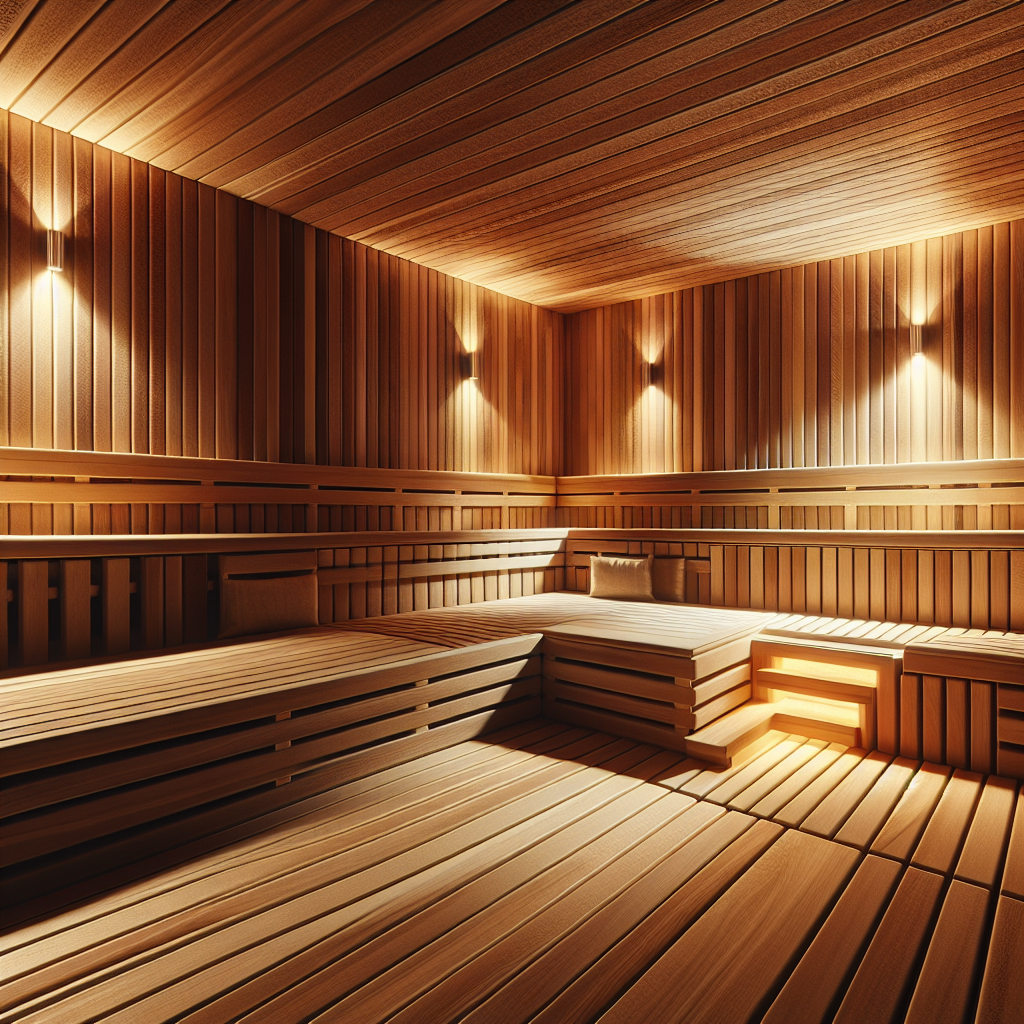Are Indoor Saunas Safe? Unveiling the Truth!
When considering the addition of a sauna to your home, safety is paramount. Are indoor saunas safe? This question is essential for potential buyers and users alike. Indoor saunas, when used correctly, offer a plethora of health benefits, including improved cardiovascular function, relaxation, and detoxification through perspiration. However, understanding the safety protocols and potential risks is crucial for ensuring a positive and secure sauna experience.
At Saunas.com, we take pride in providing top-tier, American-made saunas that prioritize safety and quality. With technological advancements and rigorous standards, our indoor saunas are designed to deliver therapeutic warmth while adhering to stringent safety measures. It's important to follow manufacturer guidelines and to be aware of one's own health conditions when using a sauna. To ensure you have the most accurate information and a safe experience, email us at Info@saunas.com or call 888-503-8157 for personalized advice and support.
In the following sections, we will unveil the truth behind indoor sauna safety, discuss the health benefits, and provide tips to help you safely enjoy the rejuvenating effects of your home sauna. Stay informed and confident in your decision to integrate this wellness practice into your life.
Understanding the Health Benefits of Indoor Saunas

The allure of indoor saunas extends beyond their warmth and relaxation; they are also celebrated for their significant health benefits. Regular sauna sessions are linked to a myriad of positive outcomes, ranging from physical to mental wellness improvements. One of the most profound benefits is the enhancement of cardiovascular health. The heat exposure in a sauna can mimic the effects of moderate exercise, increasing heart rate and improving circulation.
Moreover, saunas are renowned for their ability to promote detoxification. The intense heat induces sweating, which helps the body to eliminate toxins and can contribute to better skin health. The stress-relief aspect of sauna use cannot be overstated; it provides a tranquil environment to unwind, which can reduce the levels of stress hormones in the body and promote a sense of mental clarity.
For those seeking to alleviate pain, the heat from a sauna can soothe aching muscles and joints, making it a beneficial adjunct to pain management strategies. It's also worth noting that the use of saunas might boost the immune system by increasing the production of white blood cells, which are pivotal in fighting off infections.
While the health benefits of indoor saunas are compelling, it is important to utilize them in moderation and with adherence to safety guidelines, to ensure that these wellness practices contribute positively to your overall health. In the next section, we will delve into the potential risks associated with indoor saunas and how to mitigate them effectively.
Assessing Potential Risks of Indoor Sauna Use

While the health benefits of indoor saunas are significant, it is crucial to be aware of potential risks to ensure a safe and enjoyable experience. Overheating is a primary concern, especially for individuals who may not be accustomed to the high temperatures. Excessive time spent in a sauna can lead to heat exhaustion or heat stroke, conditions characterized by symptoms like dizziness, nausea, and fainting.
Dehydration is another risk factor, as the body loses fluids through sweat. It's vital to stay hydrated before, during, and after sauna use to prevent dehydration and its associated complications such as kidney stones or even kidney failure in extreme cases.
People with certain health conditions should exercise caution or avoid sauna use entirely. Those with cardiovascular diseases, respiratory issues, or low blood pressure may find that sauna heat exacerbates their conditions. Pregnant women are also advised to consult with their healthcare providers before using saunas, as the high temperatures could pose risks during pregnancy.
Finally, the risk of burns should not be overlooked. Contact with the hot surfaces inside a sauna can cause skin burns if not careful. It is essential to follow the manufacturer's guidelines on the use of protective barriers and to move slowly and deliberately within the sauna space to avoid accidental contact with heating elements.
Understanding these risks and how to navigate them is critical for a safe sauna experience. By staying informed and attentive to one's own body and health status, sauna users can minimize risks and optimize the therapeutic effects of indoor sauna use. The following section will offer valuable safety tips and best practices for indoor sauna enthusiasts.
Safety Measures for Optimal Indoor Sauna Experience
To ensure an optimal and safe indoor sauna experience, it is essential to implement several safety measures. Proper hydration is paramount; drinking plenty of water before and after sauna sessions is advised to replenish lost fluids and prevent dehydration. It is also recommended to avoid alcohol and drugs before sauna use, as these substances can impair judgment and increase dehydration.
Setting a reasonable time limit for each session can prevent overheating and related health issues. Most experts suggest starting with shorter sessions of around 15 minutes and gradually increasing the duration as one becomes more accustomed to the heat.
Adequate ventilation is another crucial factor. Good air flow helps regulate temperature and humidity levels within the sauna, ensuring a comfortable and safe environment. It is vital to use saunas that are built with proper ventilation systems in place.
Temperature control is equally important. Saunas should be equipped with reliable thermostats to maintain a safe heating range—typically between 150°F and 195°F (65°C and 90°C). Users should adjust the temperature to their comfort level, keeping in mind that higher temperatures are not necessarily better and can increase risks.
Lastly, post-sauna cool-down is a step that should not be overlooked. After exiting the sauna, it is beneficial to allow the body to cool gradually, which can help stabilize the heart rate and blood pressure. Taking a lukewarm shower or sitting in a cooler area can assist in this process.
By adhering to these safety measures, sauna users can significantly reduce the risks associated with indoor sauna use and enhance their overall wellness experience. The next section will delve into the best practices for maintaining your indoor sauna to ensure it remains a safe and healthy environment for years to come.
Guidelines for Safe Indoor Sauna Temperature and Duration

When it comes to enjoying the benefits of an indoor sauna, understanding and adhering to guidelines for temperature and duration is crucial for safety. The optimal temperature for an indoor sauna generally falls between 150°F and 195°F (65°C and 90°C). At this range, users can experience the therapeutic heat without exposing themselves to excessive temperatures that could pose health risks.
For the duration, it is recommended to start with short sessions, particularly for beginners. A period of 10 to 15 minutes is sufficient to gain the sauna's benefits while allowing the body to acclimatize to the heat. Over time, as one becomes more comfortable and conditioned to the sauna environment, sessions can be extended to a maximum of 20 to 30 minutes. However, it is important to listen to one's body and exit the sauna if any discomfort or signs of overheating occur.
It's essential to avoid prolonged exposure, as excessive time in high heat can lead to dehydration, heat exhaustion, or even heat stroke. To maintain a safe experience, users should take breaks between sessions, allowing the body to cool down and hydrate.
Moreover, using an accurate sauna thermometer can help monitor the temperature effectively. Adjusting the heat source or opening a vent can regulate the temperature to remain within the safe range. For electric saunas, reliable thermostats and timers are indispensable tools to ensure precise control over the sauna's environment.
By closely following these guidelines for temperature and duration, sauna enthusiasts can ensure their indoor sauna sessions are not only enjoyable but also safe. The final section will offer additional tips to help users maximize the health benefits of their indoor sauna while minimizing any potential risks.
Maintenance and Hygiene Practices for Sauna Safety

Maintaining your indoor sauna is not only essential for its longevity but also for ensuring the safety and hygiene of its users. Regular cleaning and maintenance of the sauna can prevent the growth of mold and bacteria, which thrive in warm and moist environments. It's important to clean the benches, backrests, and floor after each use with mild, non-abrasive cleaners that are suitable for the sauna's interior materials.
For optimal hygiene, it's advisable to sit on towels and ensure that users shower both before and after using the sauna to remove body oils and sweat. Towels should be washed after every session, and any removable mats or floor coverings should be cleaned frequently. Additionally, the sauna should be aired out regularly to allow fresh air to circulate and to assist in drying out any remaining moisture.
Periodically, a more thorough cleaning should be scheduled, which involves inspecting and treating the wood with special oils designed for saunas to prevent it from drying out or cracking. It's also crucial to check and maintain the proper function of the heater, including any electrical connections, to ensure it operates safely and efficiently.
Adhering to these hygiene and maintenance practices will not only extend the lifespan of your sauna but also provide a safe and pleasant environment for all users. If you have any questions about maintaining your indoor sauna or need assistance with selecting the right cleaning products, email us or call 888-503-8157 for expert advice tailored to your specific sauna model.
As we conclude, remember that regular maintenance and adherence to hygiene practices are as critical to sauna safety as the materials used in construction and the design of the sauna itself. By taking these steps, you can enjoy all the benefits of your indoor sauna with peace of mind, knowing it's a clean and safe retreat within your home.
